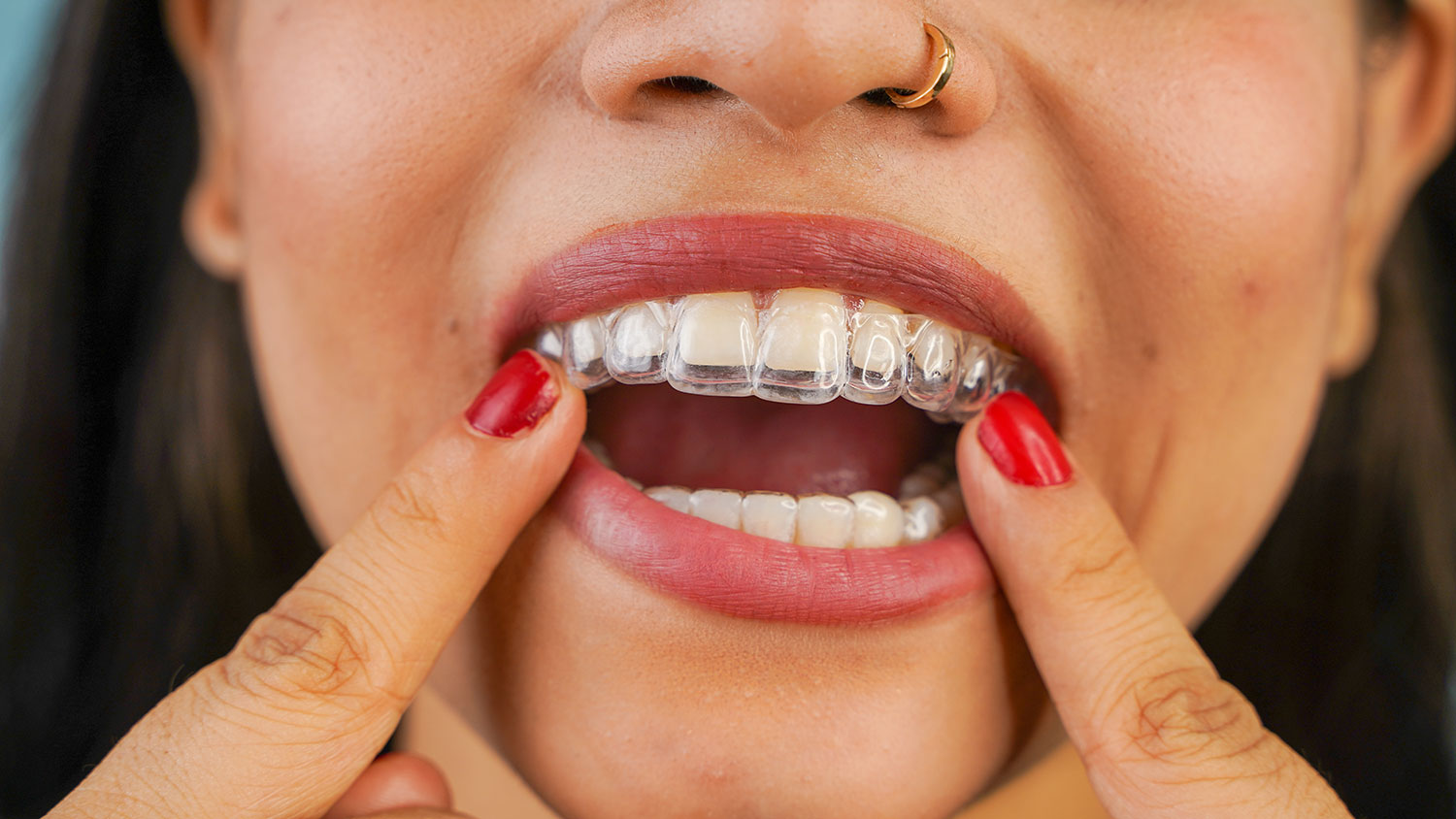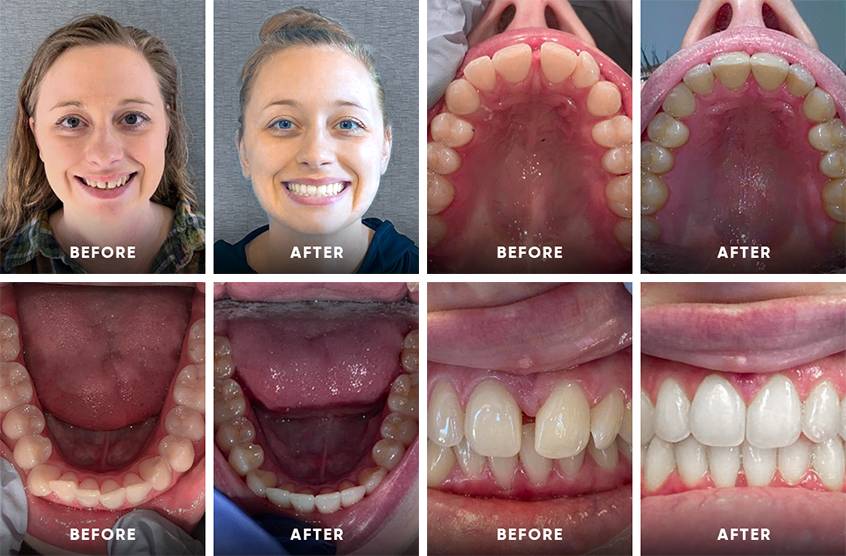The Price of Invisalign: Recognizing the Investment in Your Smile
The Price of Invisalign: Recognizing the Investment in Your Smile
Blog Article
Invisalign vs. Conventional Braces: Which Option Is Right for You?
When considering orthodontic therapy, the choice in between Invisalign and standard dental braces offers numerous important aspects that merit mindful examination. Invisalign uses a discreet alternative with detachable aligners, while traditional braces provide a much more visible yet efficient service for extreme imbalance. Each choice includes distinctive advantages and downsides associated with aesthetic appeals, comfort, treatment period, and cost. Recognizing these subtleties is crucial for making an informed decision that lines up with your individual choices and way of life. The inquiry stays: which alternative will best meet your orthodontic needs and expectations?
Review of Therapy Alternatives

In contrast, traditional dental braces are composed of metal brackets and cords that are adhered to the teeth. This method uses continual pressure over time to achieve placement. While efficient for complicated orthodontic problems, traditional braces call for routine sees for modifications and can pose difficulties in keeping dental health because of the problem of cleaning around brackets and wires.
Both choices have their merits, and the option usually depends upon certain dental conditions, lifestyle choices, and client compliance. Inevitably, getting in touch with an orthodontic expert is critical for determining the most suitable therapy plan customized to private demands. Comprehending the nuances of each option can substantially influence the overall success of orthodontic treatment.
Aesthetic Considerations
A significant factor affecting the selection in between Invisalign and typical braces is the aesthetic allure each therapy provides. Invisalign aligners are crafted from clear plastic, making them basically undetectable when used. This discreet appearance is particularly attracting grownups and teens that may feel uncomfortable regarding their orthodontic therapy. The capacity to maintain an all-natural smile throughout the alignment procedure can dramatically enhance the person's confidence in social and expert setups.
On the other hand, traditional braces consist of metal brackets and cables, which can be a lot more recognizable. While advancements in orthodontic innovation have led to the growth of smaller brackets and colored elastics, traditional braces still preserve a more noticeable profile. For some people, the visibility of braces might hinder them from looking for required treatment.
Eventually, the selection in between Invisalign and standard braces might hinge on personal preferences pertaining to looks. Clients who focus on discretion usually favor Invisalign, while those who are less concerned about exposure might select standard dental braces. Comprehending the aesthetic ramifications of each option is essential for making an informed choice that straightens with one's way of life and preferences.
Comfort and Convenience

In terms of convenience, Invisalign aligners are removable, making it possible for clients to enjoy look what i found their favorite foods without limitation and maintain optimum dental health. Cleaning and flossing are streamlined, as the aligners can be gotten during these regimens, whereas traditional braces require careful navigating around braces and wires.
Furthermore, Invisalign's progressive system enables less orthodontic brows through. Patients generally receive numerous collections of aligners simultaneously, which can improve the therapy procedure and reduce time spent in the orthodontist's chair. In contrast, traditional dental braces necessitate normal modifications, making them much less practical for those with active routines. Invisalign. On the whole, the comfort and convenience of Invisalign make it an enticing option for several individuals looking for orthodontic therapy.
Therapy Period and Efficiency
While both Invisalign and typical dental braces work in remedying oral misalignments, the duration of therapy can our website vary substantially in between both alternatives. Normally, Invisalign therapy can take anywhere from 12 to 18 months, relying on the intricacy of the instance. The clear aligners function by slowly moving teeth into their wanted settings, and routine follow-ups with an orthodontist help make sure development remains on course.
On the other hand, conventional dental braces typically need a longer commitment, usually ranging from 18 months to three years. This is due to their set nature and using cords and brackets, which can be a lot more reliable article source for severe imbalances and complex cases (Invisalign). The therapy effectiveness of conventional dental braces is well-documented, as they allow for precise changes and higher control over tooth activity
Ultimately, the option in between Invisalign and standard dental braces may pivot on both the awaited therapy period and the specific oral problems handy. Consulting with an orthodontist is critical, as they can supply tailored referrals based upon private needs, ensuring the picked method aligns with wanted durations and end results.
Expense Contrast and Insurance Policy Alternatives
Cost plays a significant duty in the decision-making process for individuals considering orthodontic treatment, whether choosing Invisalign or conventional dental braces. On standard, the price of Invisalign varieties from $3,000 to $8,000, while typical dental braces usually cost in between $2,000 and $6,000. Elements affecting these prices include the complexity of the case, the period of treatment, and geographical location.
Lots of oral insurance policy plans give partial insurance coverage for orthodontic therapies, but the specifics can differ commonly. Usually, typical dental braces might be more frequently covered by insurance coverage plans compared to Invisalign, which some insurers classify as an aesthetic procedure.
Additionally, numerous orthodontic methods supply adaptable layaway plan, making both treatment choices extra available. People should ask about potential funding alternatives and discounts for in advance settlements. Assessing the total price, consisting of insurance advantages and layaway plan, is necessary for making an educated decision that aligns with both visual choices and budget considerations.

Final Thought
In recap, the selection in between Invisalign and conventional braces hinges on multiple factors, including aesthetic choices, convenience, therapy duration, and cost. Invisalign uses a very discreet, detachable choice that assists in dental hygiene and dietary versatility, while typical braces may be better for complicated dental concerns and typically come with a lower rate factor. Inevitably, examination with an orthodontist is vital to evaluate individual scenarios and identify one of the most proper therapy alternative for attaining ideal dental positioning.
When thinking about orthodontic treatment, the choice between Invisalign and traditional dental braces presents numerous essential variables that merit mindful assessment.Comparing Invisalign and typical braces discloses distinct therapy alternatives for orthodontic improvement.While both Invisalign and conventional braces are efficient in remedying dental imbalances, the duration of treatment can differ dramatically between the 2 alternatives.Expense plays a substantial function in the decision-making process for people considering orthodontic treatment, whether deciding for Invisalign or traditional braces.In summary, the selection between Invisalign and standard braces pivots on several factors, including visual preferences, convenience, treatment period, and expense.
Report this page